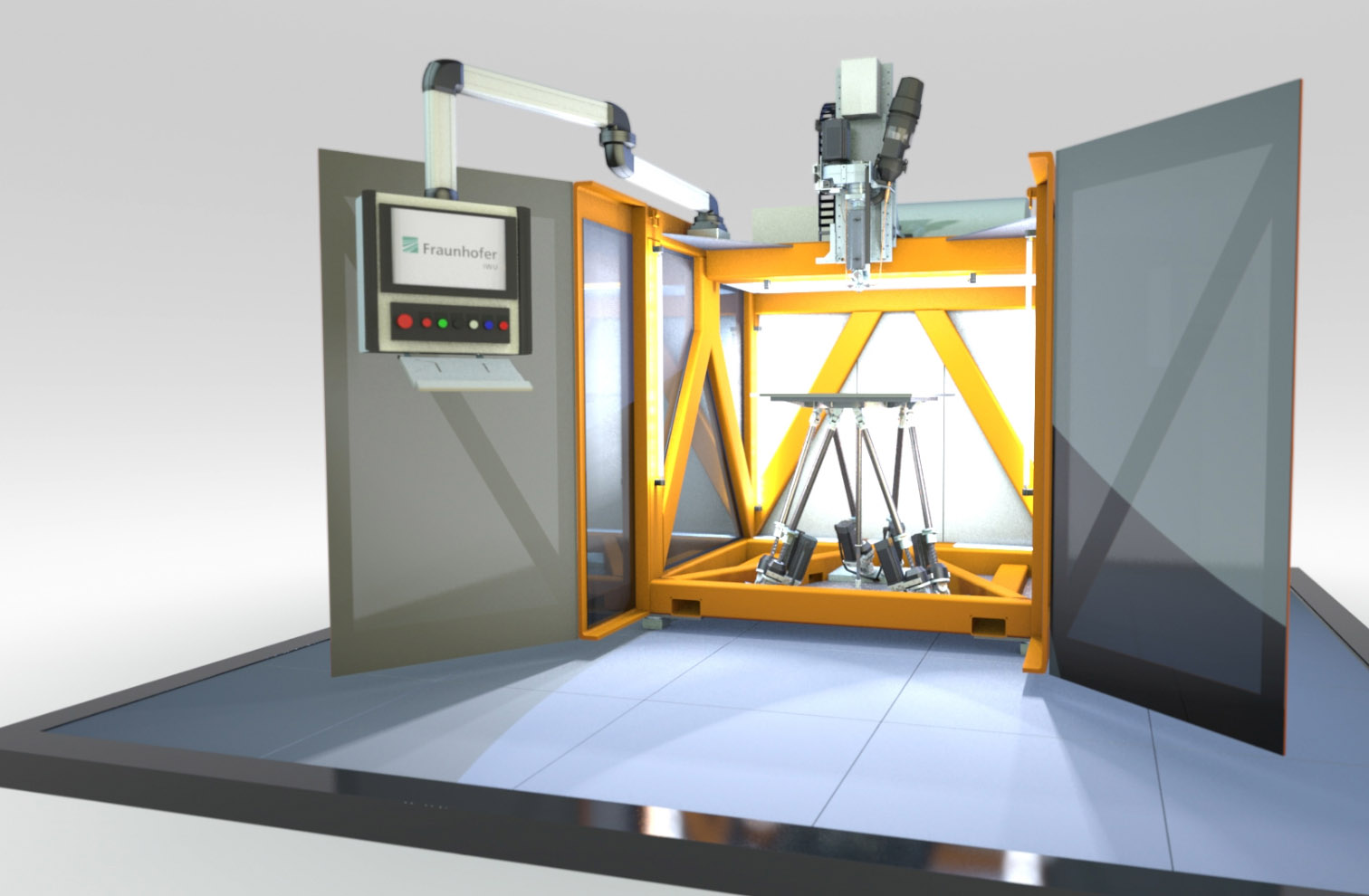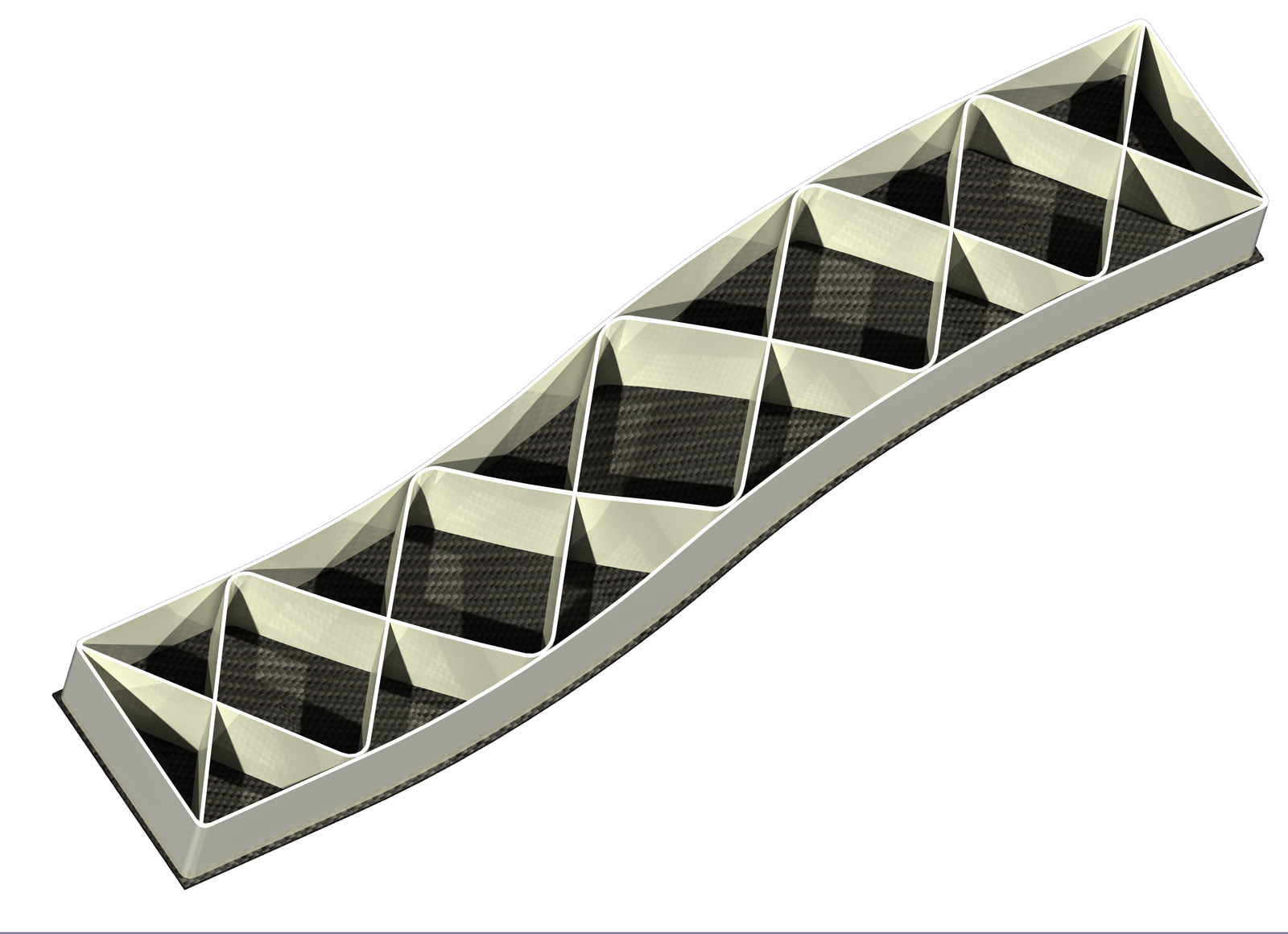The Fraunhofer Institute for Machine Tools and Forming Technology, (Fraunhofer IWU) in Chemnitz, Germany, has developed the first prototype of its Screw Extrusion Additive Manufacturing (SEAM) system for high-speed FFF/FDM 3D printing.
The SEAM system, which will be unveiled at Germany’s Hannover Messe 2019 trade fair in April, is a hybrid machine integrating machine tool technology with additive manufacturing.
According to Dr. Martin Kausch, Head of Department STEX – Systems and Technologies for Textile Structures, this 3D printer is equipped with a construction platform capable of swiveling in six axes. Above is the screw extruder designed to melt and eject plastics at a high output rate.
“This [unit] enables us to print eight times faster than conventional processes, enormously reducing the production times for plastic components.”

Hybrid machining
In 2017, Fraunhofer IWU entered into a partnership with Italian machine center makers CMS to research and develop a new hybrid CNC milling 3D printer. This collaboration is seeking to address the slow 3D printing speed of FFF for the mass-production of components, particularly, within the automotive industry.
This birthed the concept of the 3D Kreator system, designed to operate beyond standard XYZ directional 3D printers. Using the SEAM system, this 3D printer was built with tool paths across 5 axes, providing more geometrical freedom to FFF.
Now, a new SEAM system has been realized and is said to take 18 minutes to produce a plastic component 30 centimeters in height. This is a significant difference from the hours taken for some FFF 3D printed models.

A new SEAM system
The construction platform on the latest SEAM system can be moved at a speed of one meter per second in the X-, Y- and Z-axes and can also be tilted by up to 45 degrees, according to Dr. Kaausch. Furthermore, SEAM processes are built to decrease material costs by a factor of 200. This is executed by the swiveling platform which ultimately enables the ability to 3D print on curved structures with a separately moving Z-axis.
Kausch explained, “In tests, we were able to process a wide variety of plastics. They ranged from thermoplastic elastomers to high-performance plastics with a 50% content of carbon fiber. These plastics are materials that are particularly relevant to industry and cannot be processed with traditional 3D printers.”
The first SEAM 3D printer will be demonstrated at Hannover Messe 2019 from April 1– 5th (Hall 2, Booth C22).
For more of the latest 3D printing developments, follow us on Twitter, like us on Facebook and subscribe to our 3D Printing Industry Newsletter.
Also, join 3D Printing Jobs now for opportunities in the additive manufacturing sector.
Featured image shows the SEAM 3D printer. Image via Fraunhofer IWU.


